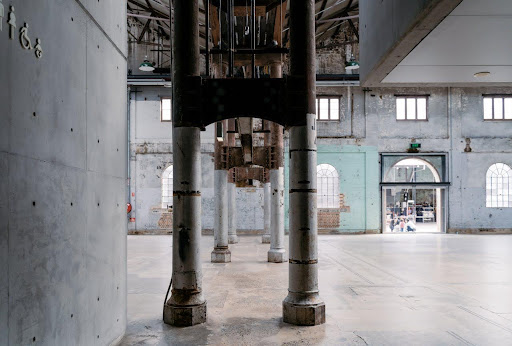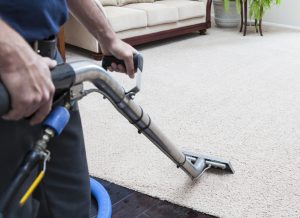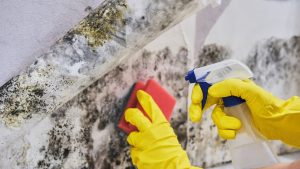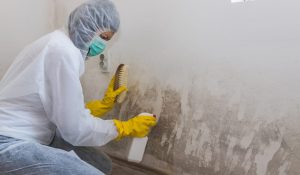
In this article, we will address several key questions regarding structural drying for commercial properties in Sydney. We will guide you through the importance of structural drying for commercial properties. We will also provide insights into the process, its benefits, and how to choose the right water damage restoration service in Sydney.
What is structural drying, and why is it essential for preventing water damage?
What are the common causes of water damage in commercial properties?
How does the structural drying process work, and what steps are involved?
Additionally, we will explore how to choose the right water damage restoration service and the benefits of timely and effective structural drying. Water damage can be a nightmare for any commercial property owner in Sydney. It can lead to significant structural issues and disrupt business operations.
Structural drying is a crucial step in the water damage restoration process. It helps to prevent further damage and maintain the integrity of the building. However, the process is not as simple as it may seem. It requires professional expertise, advanced technology, and a thorough understanding of the building’s structure and materials. Whether you are currently dealing with water damage or want to be prepared for potential incidents, this guide will be a valuable resource.
Understanding Structural Drying and Its Importance
Structural drying is a process that removes excess moisture from the building materials of a property. It is a critical step in water damage restoration. The goal is to return the moisture levels to a normal range. This helps to prevent further damage such as mould growth and structural instability. In Sydney, where storms and flooding are common, structural drying is particularly important for commercial properties. It not only protects the physical structure but also ensures the continuity of business operations.
In the next sections, we will delve deeper into the impact of water damage and the process of structural drying.
The Impact of Water Damage on Sydney’s Commercial Properties
Water damage can have a significant impact on commercial properties. It can lead to structural issues that compromise the safety of the building. Moreover, water damage can disrupt business operations. This can result in financial losses due to downtime and lost productivity. In severe cases, water damage can even lead to the closure of the business. This is especially true if the damage is not addressed promptly and effectively. Therefore, it is crucial for commercial property owners in Sydney to understand the importance of structural drying. It is a key step in mitigating the effects of water damage.
Common Causes of Water Damage in Sydney
Water damage in Sydney’s commercial properties can occur due to various reasons. Some of these are natural, while others are man-made. Natural causes include heavy rainfall and storms, which are common in Sydney. These can lead to flooding, especially in low-lying areas. Man-made causes include plumbing issues like pipe bursts. These can cause significant water damage, especially if not detected early.
- Heavy rainfall and storms
- Flooding
- Plumbing issues (e.g., pipe bursts)
- HVAC system issues
- Roof leaks
- Firefighting efforts
Understanding these causes can help property owners take preventive measures. It can also aid in the quick identification and resolution of water damage issues.
The Structural Drying Process: Steps to Recovery
Structural drying is a systematic process. It involves several steps to ensure effective water damage repair. The first step is inspection. Professionals assess the extent of water damage. They identify the areas that need drying. Next is water extraction. This involves removing standing water from the property. It’s a crucial step to prevent further damage.
- Inspection
- Water extraction
- Drying
- Dehumidification
- Monitoring
Then comes the drying process. It involves the use of air movers to speed up evaporation. This helps to dry out wet materials. Dehumidification follows drying. It helps to remove excess moisture from the air. This prevents secondary water damage. The final step is monitoring. Professionals monitor the drying process. They ensure that all materials reach their drying goals. Each step is crucial for effective structural drying. It ensures the property is dry and safe for use.
Choosing the Right Water Damage Restoration Service
Choosing the right service provider is crucial. It can make a significant difference in the recovery process. Look for a company with a solid reputation. Check reviews and testimonials. This can give you an idea of their reliability.
Experience matters in water damage restoration. An experienced company understands the complexities of structural drying. They can handle different types of water damage. Certification is another important factor. It ensures the company adheres to industry standards. They have the necessary skills and knowledge.
Lastly, consider their response time. A quick response can minimise damage and speed up recovery.
Advanced Technology in Moisture Assessment
Moisture assessment is a critical step in structural drying. It helps identify the extent of water damage. Advanced technology plays a key role in this process. Tools like thermal imaging cameras can detect hidden moisture. This ensures a thorough drying process. Remember, undetected moisture can lead to long-term damage. It can cause mould growth and structural issues. Therefore, choose a service provider that uses advanced moisture assessment tools. It’s a sign of their commitment to quality service.
Benefits of Timely and Effective Structural Drying
Timely and effective structural drying has several benefits. First, it helps maintain the structural integrity of your property. Second, it prevents the growth of mould. Mould can cause health issues for employees and customers. Third, it minimises business interruption. The faster the drying process, the sooner you can resume operations. Moreover, it reduces repair costs. The longer water damage is left untreated, the more extensive the damage.
Lastly, it helps preserve the value of your property. This is crucial for commercial properties as an investment.
Risks of Inadequate Drying and Long-Term Damage
Inadequate drying can lead to long-term damage. This includes structural instability and decay. Mould and mildew can also thrive. These pose health risks and can degrade building materials. Moreover, it can lead to unpleasant odours. This can affect the comfort and satisfaction of your customers.
Lastly, it can increase repair costs. The longer the damage is left untreated, the more expensive the repairs.
Preventative Measures and Maintenance Tips
Preventing water damage is crucial. Regular maintenance and inspections can help.
Here are some tips:
- Regularly check for leaks and cracks.
- Keep gutters and drains clean.
- Install water detection devices.
Remember, prevention is better than cure. It saves you time, money, and stress.
Case Studies: Successful Structural Drying in Sydney
Let’s look at some success stories. These businesses in Sydney have benefited from structural drying. One business faced severe flooding. They called in a professional team. The team used advanced drying techniques. The business was back up and running in no time. These cases show the value of professional structural drying. It’s a vital step in water damage restoration.
Conclusion: Protecting Your Investment and Business Continuity
In conclusion, structural drying is crucial. It protects your commercial property in Sydney from water damage. It’s an investment in your business’s future. Professional services are key. They ensure the drying process is thorough and effective. This helps maintain business continuity. Remember, water damage can be devastating. But with the right response, you can protect your business.



